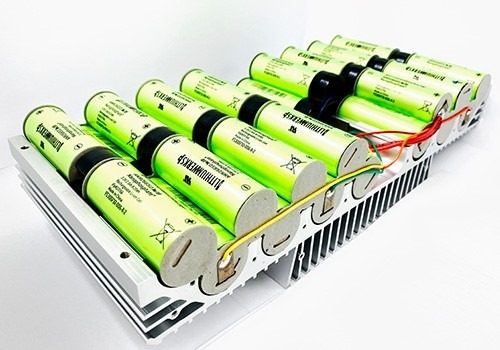LFP battery packs offer unique advantages for microgrid applications, providing reliable and efficient energy storage solutions. Lithium iron phosphate (LFP) battery packs, utilizing LiFePO4 as the principle cathode material, have emerged as a promising choice for energy storage in microgrid applications. Despite having a lower energy density compared to other lithium-ion chemistries, LFP battery packs excel in power density and longevity, making them well-suited for demanding microgrid environments where reliability and efficiency are paramount.
Optimizing Performance and Efficiency
Integrating LFP battery packs with energy management systems (EMS) is crucial for optimizing performance and efficiency in microgrid applications. By leveraging advanced control algorithms and real-time monitoring capabilities, EMS can effectively manage the charging, discharging, and overall operation of LFP battery packs to maximize energy utilization and minimize grid instability.
Key Benefits of Integration
- Load Balancing: EMS can intelligently distribute energy between LFP battery pack and other renewable energy sources within the microgrid to balance supply and demand, ensuring stable and reliable power delivery to critical loads.
- Peak Shaving: By strategically discharging LFP battery packs during peak demand periods, EMS can reduce reliance on grid-supplied electricity, thereby lowering utility costs and alleviating strain on the grid infrastructure.
- Grid Support: LFP battery packs integrated with EMS can provide grid support services such as frequency regulation and voltage stabilization, enhancing overall grid reliability and resilience.
Real-Time Monitoring and Control
Effective integration of LFP battery packs with EMS requires real-time monitoring and control capabilities to optimize performance and respond to dynamic grid conditions. EMS continuously monitors key parameters such as battery state of charge (SoC), voltage, and temperature, adjusting charging and discharging strategies accordingly to ensure optimal battery health and longevity.
Enhanced Grid Resilience
The integration of LFP battery packs with EMS enhances microgrid resilience by providing fast and reliable backup power in the event of grid outages or fluctuations. By seamlessly transitioning between grid-connected and islanded modes, microgrids equipped with LFP battery packs can maintain critical operations and minimize disruption to end-users.
Scalability and Flexibility
The integration of LFP battery packs with energy management systems enhances microgrid scalability and flexibility. As energy demand fluctuates or new renewable energy sources are added to the microgrid, the capacity of LFP battery packs can be easily adjusted to meet evolving needs. This scalability ensures that the microgrid remains efficient and cost-effective over time, while also providing flexibility to adapt to changing energy requirements and grid conditions.
Enhanced Reliability and Resilience
The integration of LFP battery packs with energy management systems enhances the reliability and resilience of microgrid systems. During grid outages or disruptions, LFP battery packs can seamlessly provide backup power to critical loads, ensuring continuous operation of essential services such as healthcare facilities, emergency response centers, and telecommunications networks. This enhances overall grid resilience and minimizes the impact of disruptions on communities and businesses relying on microgrid infrastructure.
Ending Notes
The integration of LFP battery packs with energy management systems offers significant benefits for optimizing performance and efficiency in microgrid applications. By intelligently managing energy storage and distribution, EMS can maximize the utilization of renewable energy sources, reduce reliance on the grid, and enhance overall grid resilience. With their inherent safety, reliability, and longevity, LFP battery packs play a crucial role in enabling the transition to a more sustainable and resilient energy future.

